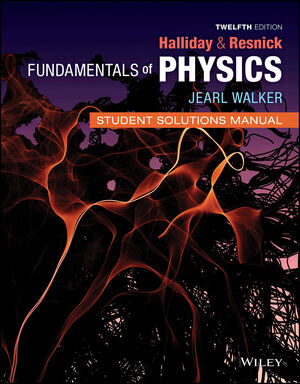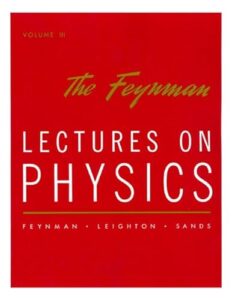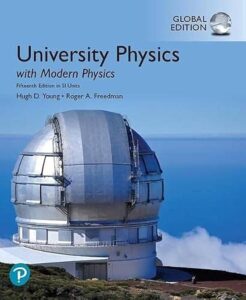“Fundamentals of Physics” by David Halliday, Robert Resnick, and Jearl Walker is one of the most popular physics textbooks for college students worldwide. Known for its clarity, comprehensive coverage, and engaging presentation, this textbook is commonly used in introductory physics courses for science and engineering students. The book’s approach emphasizes conceptual understanding along with problem-solving techniques, making it an invaluable resource for students at various levels of learning.
Content Overview
The textbook spans a broad range of topics, covering both classical and modern physics. Its core areas include:
- Mechanics: Covers topics such as kinematics, Newton’s laws of motion, work and energy, momentum, rotational motion, and gravitation. The mechanics section lays the groundwork for more advanced topics, with an emphasis on fundamental principles.
- Thermodynamics: Discusses heat, temperature, the laws of thermodynamics, and entropy. The content is presented in a way that connects microscopic behaviors with macroscopic phenomena.
- Electromagnetism: Examines electric fields, circuits, magnetic fields, electromagnetic induction, and Maxwell’s equations. This section is rich in applications, linking theory to modern technological advancements.
- Waves and Optics: Explores mechanical waves, sound, light, reflection, refraction, interference, and diffraction. This section helps students understand the behavior of waves in various contexts, from sound waves to electromagnetic waves.
- Modern Physics: Introduces students to relativity, quantum mechanics, atomic structure, nuclear physics, and particle physics. These advanced topics are crucial for understanding cutting-edge scientific developments.
The book is typically organized in a modular format, allowing students and instructors to focus on specific sections as needed.
Key Features
- Conceptual Approach: “Fundamentals of Physics” is renowned for its emphasis on conceptual understanding before diving into mathematical problem-solving. Each chapter begins with a conceptual introduction, laying the groundwork for deeper exploration of the topic through equations and calculations. This approach is particularly beneficial for students who may find physics intimidating, as it demystifies abstract concepts early on.
- Problem-Solving Focus: The textbook is packed with numerous example problems that walk students through step-by-step solutions. These worked examples help students develop strong problem-solving skills by showing how to apply physics principles to solve real-world problems. Each chapter concludes with a variety of practice problems, ranging from basic to complex, allowing students to test their understanding of the material.
- “Check Your Understanding” Sections: Throughout the book, there are conceptual checkpoints that prompt students to pause and reflect on the material. These sections encourage students to assess their understanding of the concepts before proceeding, reinforcing their grasp of the material.
- Interactive Features and Resources: Recent editions of the textbook are often paired with online learning platforms such as WileyPLUS, which provide interactive tutorials, quizzes, and additional practice problems. These online resources are designed to enhance students’ learning experience and provide immediate feedback on problem-solving techniques. The integration of digital resources also allows for more dynamic engagement with the material.
- Visual Learning Aids: The textbook is filled with diagrams, illustrations, and graphs that help clarify complex concepts. These visual aids are particularly helpful for understanding abstract ideas like field lines in electromagnetism or the wave nature of light. Each diagram is carefully crafted to correspond with the mathematical content, reinforcing the connection between theory and application.
- Historical Perspectives: “Fundamentals of Physics” also incorporates short historical notes on major figures in physics and the development of key theories. These sections provide context for the material, helping students appreciate the evolution of physics over time. It also highlights how scientific discoveries were built upon earlier knowledge, emphasizing the cumulative nature of scientific inquiry.
Use in Academia
“Fundamentals of Physics” is widely used in undergraduate physics courses around the world, especially in calculus-based physics classes for engineering, physics, and other science majors. Its structured presentation of material, with a balance between conceptual understanding and mathematical rigor, makes it suitable for multi-semester courses. The textbook’s modular organization allows instructors to customize the content for specific course objectives, whether the focus is on classical mechanics, electromagnetism, or modern physics.
Many instructors appreciate the flexibility of the text, as they can choose chapters based on the needs of their course. This versatility has contributed to the book’s widespread adoption in both introductory and intermediate-level physics courses.
Strengths
- Clear and Engaging Presentation: The book’s writing style is clear and accessible, making it easier for students to grasp challenging concepts. The authors use a conversational tone that invites students to engage with the material, helping to reduce the intimidation factor often associated with physics.
- Comprehensive Coverage: The textbook covers a broad range of topics, from fundamental mechanics to modern physics. This comprehensive approach ensures that students have a strong foundation in physics, regardless of their specific focus or major.
- Balanced Conceptual and Mathematical Approach: The textbook is well-regarded for its balance between conceptual explanations and mathematical problem-solving. It provides students with the tools they need to understand the “why” behind the equations, which is crucial for mastering the subject.
- Real-World Applications: Throughout the book, real-world examples and applications of physics concepts are used to illustrate the relevance of physics to everyday life and modern technology. This practical approach helps students connect theoretical concepts to real-world scenarios, increasing their motivation to learn.
Considerations
- Difficulty Level: Some students may find the problem sets challenging, especially those with less experience in mathematics. While the book does an excellent job of explaining concepts, the level of rigor required in the problem-solving exercises may require additional support for students who struggle with math.
- Length: Like other comprehensive physics textbooks, “Fundamentals of Physics” is lengthy, which can be overwhelming for students. However, this also means that the textbook can serve as a long-term reference for multiple courses.
Conclusion
“Fundamentals of Physics” by David Halliday, Robert Resnick, and Jearl Walker remains a cornerstone of physics education. Its clear, engaging writing style, combined with its emphasis on both conceptual understanding and problem-solving, makes it one of the most popular and widely used physics textbooks in academia. The book’s broad coverage, interactive resources, and real-world applications make it an essential resource for students in physics, engineering, and other sciences. Whether used in a classroom setting or for independent study, this textbook provides students with the knowledge and skills needed to master the principles of physics and succeed in their academic and professional careers.



